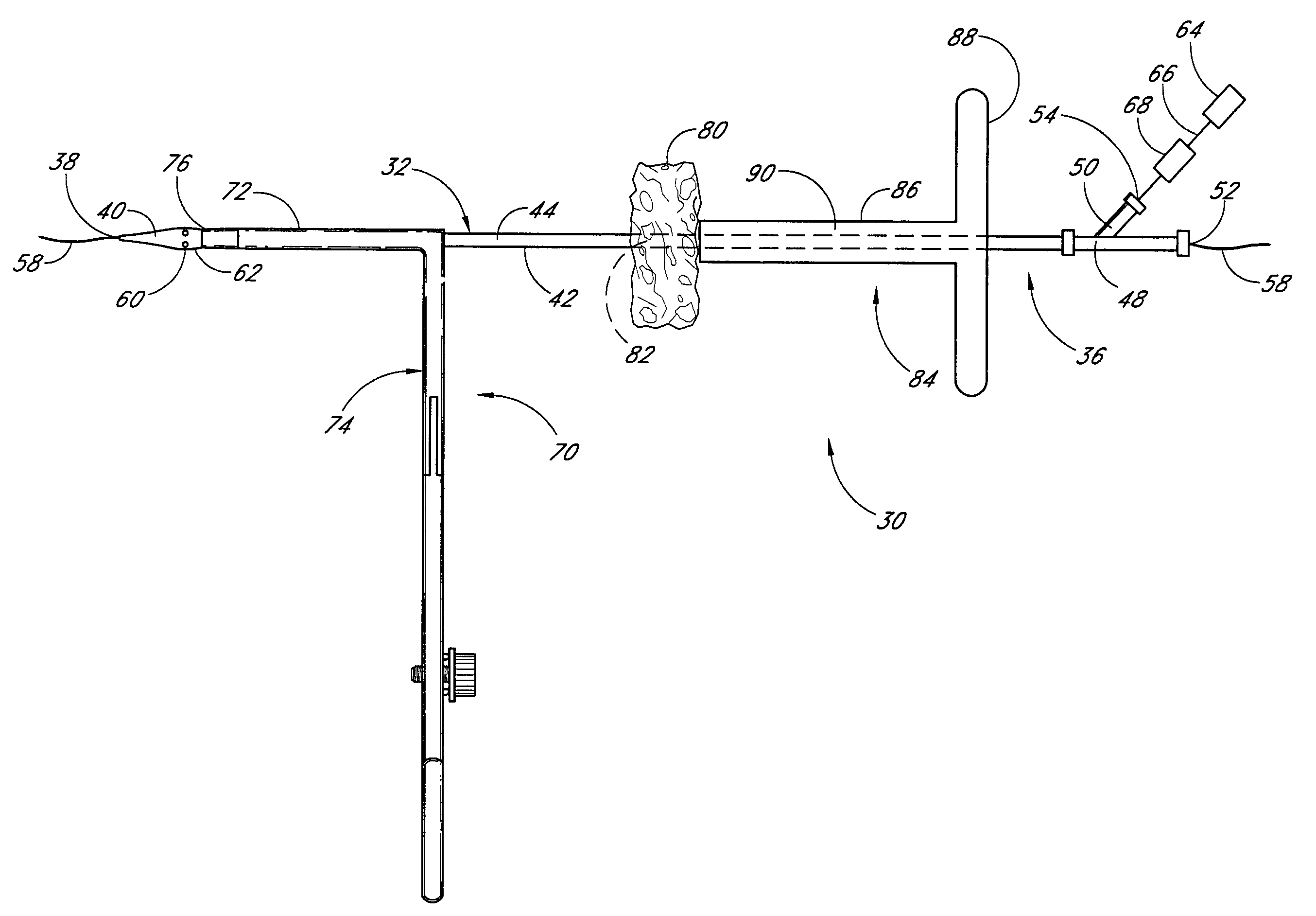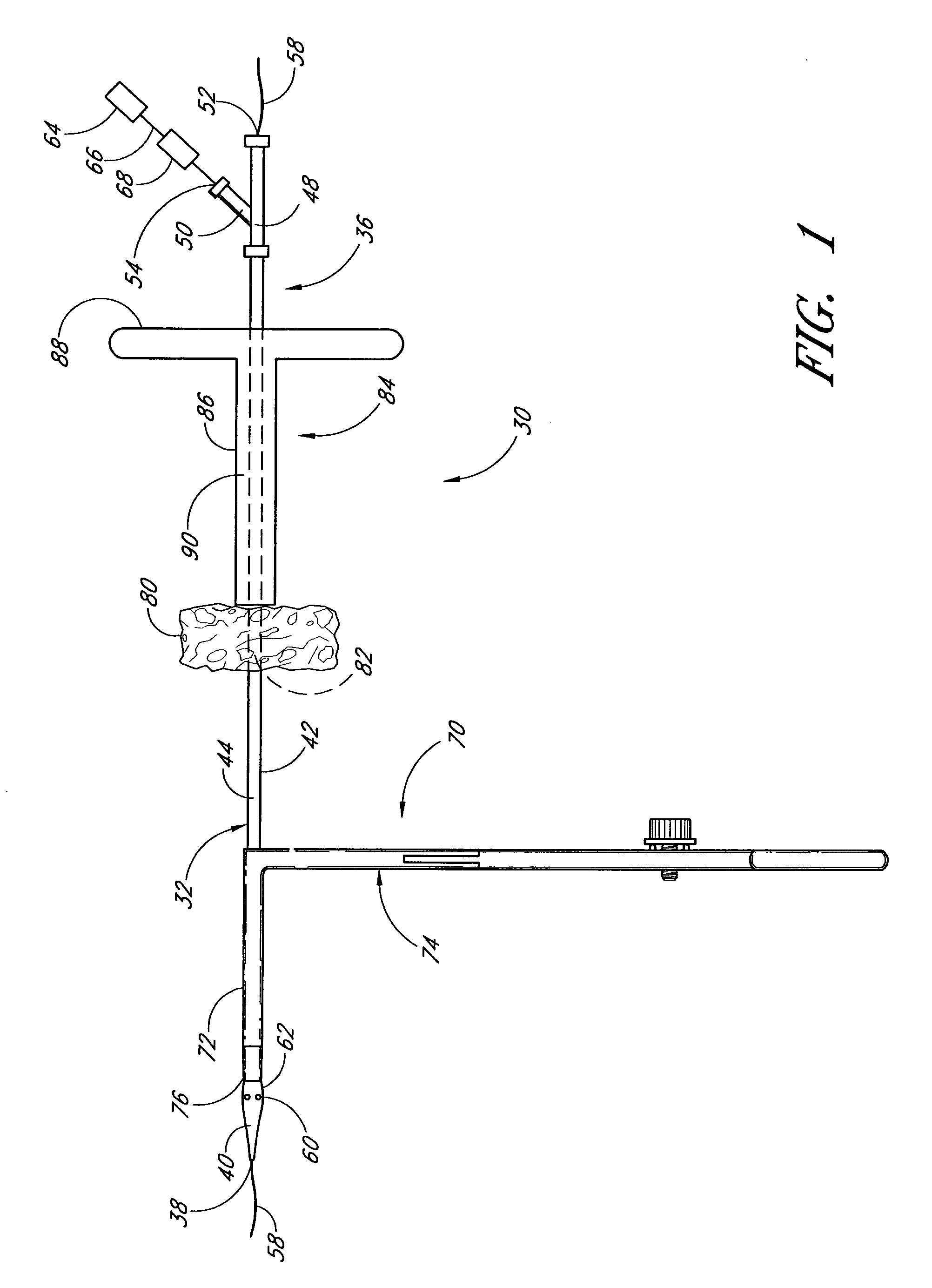Vascular wound closure device and method
a wound closure and wound technology, applied in wound clamps, medical science, surgery, etc., can solve the problems of increased risk of infection and reopening, limited success, and wound reopening and bleeding, and achieve the effect of preventing hemostatic material
- Summary
- Abstract
- Description
- Claims
- Application Information
AI Technical Summary
Benefits of technology
Problems solved by technology
Method used
Image
Examples
Embodiment Construction
[0071] The present embodiments are especially useful for closing vascular puncture wounds that are difficult to access and / or visualize. It is difficult to directly and accurately modify a wound in a blood vessel in order to close such wounds. Additionally, there are pitfalls associated with directly modifying the blood vessel. For example, since the clinician cannot see the wound, it is difficult to correctly place closure media such as sutures, staples, or clips. Incorrect placement of such closure media likely results in inadequate closure; the puncture wound remains open, perhaps without the clinician being aware. Additionally, incorrect placement of closure media may cause permanent damage to the vessel, including tearing and additional puncture wounds. Further, if closure media extends through the wound and into the blood flow, this media can increase the likelihood of thrombus formation or could introduce potentially toxic substances into the bloodstream. Of course, closure m...
PUM
 Login to View More
Login to View More Abstract
Description
Claims
Application Information
 Login to View More
Login to View More - R&D
- Intellectual Property
- Life Sciences
- Materials
- Tech Scout
- Unparalleled Data Quality
- Higher Quality Content
- 60% Fewer Hallucinations
Browse by: Latest US Patents, China's latest patents, Technical Efficacy Thesaurus, Application Domain, Technology Topic, Popular Technical Reports.
© 2025 PatSnap. All rights reserved.Legal|Privacy policy|Modern Slavery Act Transparency Statement|Sitemap|About US| Contact US: help@patsnap.com



